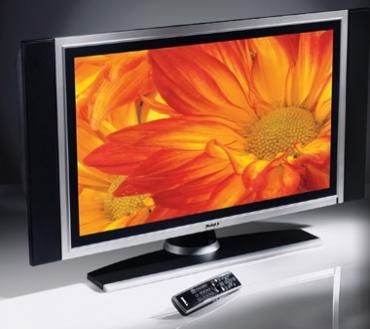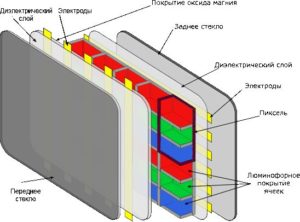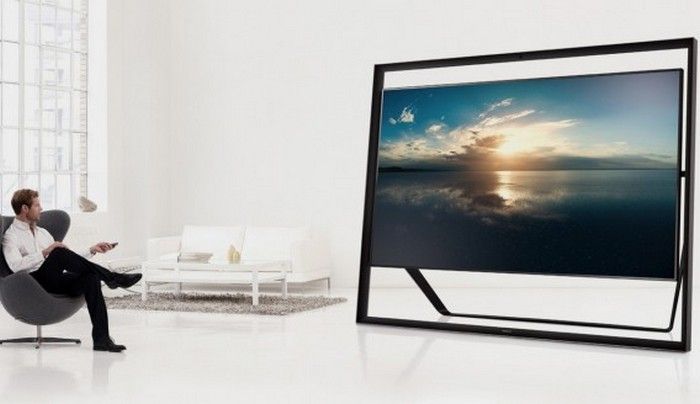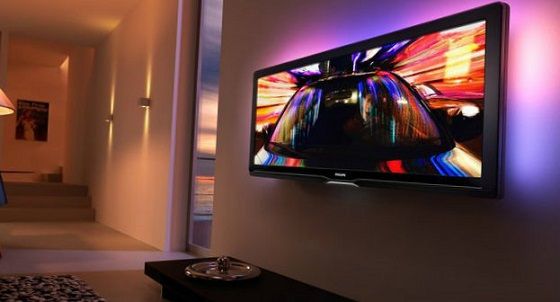How does a plasma TV work?
Thanks to the advent of plasma technology, we have the opportunity to enjoy flat-screen TVs, which can easily be hung on the wall like an ordinary picture. The first such TV was created in the 90s in Japan, and mass production was launched in 1997. Since that time, the characteristics of the technology have changed significantly for the better.

The content of the article
How does a plasma TV work?
The plasma panel is made of a million pixel cells, which in turn are filled with gas, it can be xenon or neon. These cells are placed between glass plates. As a result of the arrival of an electric charge on these cells, the gas changes its state. It becomes aggressive, in physics this state is called plasma. This, in fact, is all the wisdom and it became clear where the name, which is well known to us, comes from.
This technique has become widespread due to its relative availability and high quality. By installing a TV that operates on this principle in your home, you can enjoy a high-quality picture on the screen, and you can rest assured that the image will not jump or be unclear.
What is the working principle
 The operating principle of such systems is based on the process of gas glowing in the cells when an electric current is passed.We can say that a plasma panel is a matrix that consists of a huge number of tiny fluorescent lamps. Each cell acts as a capacitor with electrodes and is made of three tiny lamps that are filled with ionized gas. As a result of exposure to the charge, the plasma begins to emit ultraviolet light. One of the lamps is activated and lights up, namely red, blue or green. Thanks to the presence of glass, ultraviolet radiation is blocked, and the light that is visible to us is transformed thanks to the scanning electrode, and we get an image on the screen.
The operating principle of such systems is based on the process of gas glowing in the cells when an electric current is passed.We can say that a plasma panel is a matrix that consists of a huge number of tiny fluorescent lamps. Each cell acts as a capacitor with electrodes and is made of three tiny lamps that are filled with ionized gas. As a result of exposure to the charge, the plasma begins to emit ultraviolet light. One of the lamps is activated and lights up, namely red, blue or green. Thanks to the presence of glass, ultraviolet radiation is blocked, and the light that is visible to us is transformed thanks to the scanning electrode, and we get an image on the screen.
REFERENCE. As noted, only three colors of lamps are used inside the equipment, but as a result of the level of supplied voltage, it is possible to display bright, multi-colored and saturated pictures on the screen.
Advantages and disadvantages
It is worth considering the advantages and disadvantages of such a technique. As you know, the contrast ratio is one of the main factors in determining image quality. The image presented on the screen with high contrast will have a realistic character, conveying spatiality. This is one of the main advantages of this technology. We list the main positive characteristics:
- High degree of contrast.
- The viewing angle width is at a very high level.
- Black color is rendered saturated.
- Excellent color rendition.
- Really high quality image.
- The frequency of picture changes is at a high level.
- Service life up to 35 years.
These are the main positive parameters of equipment working using this technology. Let's look at the disadvantages:
- You will not be able to find models with a small diagonal in stores; this is often very inconvenient.
- During prolonged operation, equipment tends to heat up.
- High energy intensity.
- Insufficient brightness compared to equipment using LCD technology.
IMPORTANT. It is worth noting that quite a lot of electricity is spent converting the inert gas into plasma. That is, the main function of the TV consumes a large amount of energy. For cooling purposes, equipment is equipped with fans, and they also consume energy.
During operation, the plasma contrast will decrease. As a result, after several years of use, you will notice that the image is no longer so bright, the color rendition will fade several times compared to the result that you saw when you first started using the TV.
When applying static voltage, for example? When connected to a computer, the plasma may well burn out pixels. If you use the equipment exclusively for its intended purpose, this may never happen at all.
REFERENCE. Modern technology is protected from the possibility of pixel burnout; the device may break, but this happens extremely rarely, because the work is carefully thought out.






